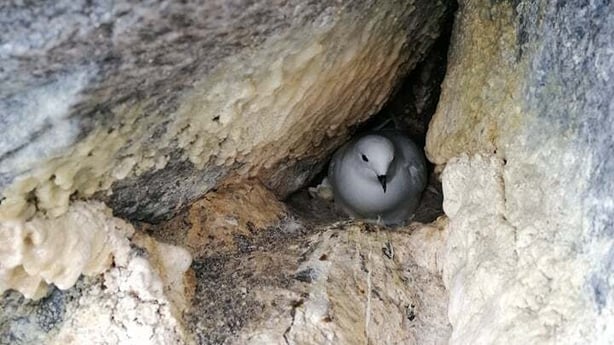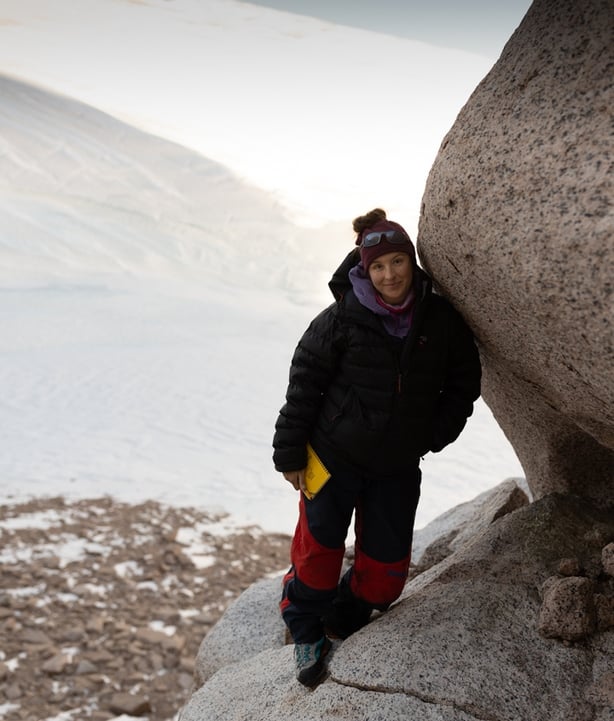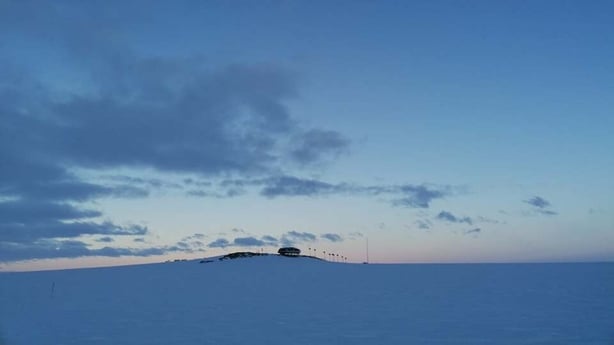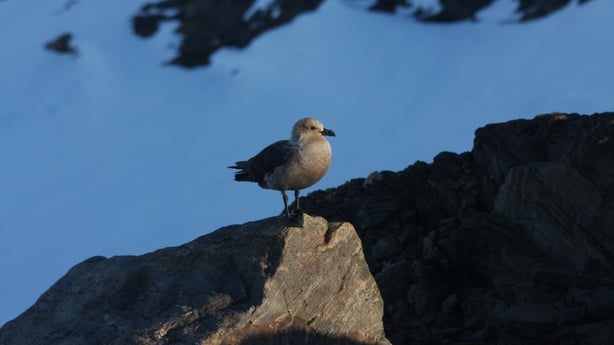Report: 'a normal day here involves skidooing to the field site and getting fresh stomach oil samples spat at us by the birds'
By Ellie Honan, Durham University
When people hear 'Antarctic seabirds’, their minds usually jump immediately to the charismatic penguins that inhabit Antarctica’s coastline. However, several Antarctic seabird species inhabit the interior of the white continent. Unlike penguins, these are flying species, capable of making the vast commute from their inland nesting grounds to the productive coastal waters of the Antarctic sea-ice zone.
One such seabird is the snow petrel, Pagodroma nivea. Snow petrels are distinct, all-white (bar their black legs, bill and eyes) seabirds, about the same size as a pigeon. Alongside Antarctic petrels and South Polar skuas, they are one of the few species that nest inland in Antarctica, occupying the crevices between boulders on rocky outcrops known as nunataks, the tips of mountains protruding over the ice sheet.

Here, during the austral summer, they raise one chick a year, which takes less than two months to turn from a tiny grey ball of fluff, dependant on its parents for warmth and food to the sleek, snow-white plumage of the adult. Snow petrels can be found nesting up to 400 km away from the coastline, a distance they can manage in less than a day during the chick-rearing period.
In the first weeks of the chicks’ lives, the parents will take turns flying to the sea ice, where they will forage amongst fragmented pack ice and along the margins of the sea ice zone. After spending some days filling up on krill, fish and squid, the adult petrels will turn for home.
On their long flight home, the petrels concentrate the fats from their recently consumed prey into a nutrient-rich oil which they store in their upper stomachs. This stomach oil is multi-purpose: it provides fuel for the adult on the trip home and acts as a rich concentrated food source for the growing chick. Beside its nutritional benefits, the oil also acts as a defence mechanism – adult petrels and chicks can spit the oil at predatory skuas and at other petrels during territorial disputes. The oil soaks into the feathers of the aggravator and interferes with the waterproofing abilities.

Alongside other birds, the petrels will spit at any seabird researchers inquisitive enough to approach their nests, which is where I come in. My research involves spending the austral summer in the Sør Rondane Mountains of Dronning Maud Land, Antarctica, collecting snow petrel stomach oil and diet samples and deploying GPS tracking devices on the breeding snow petrels.
My work is part of a project on how the sea ice has changed around the Weddell Sea region of Antarctica over the last 40,000 years. By linking the observable prey and biochemistry of the stomach oils to high resolution movement data from the GPS tracking devices, my contribution to the project aims to infer how snow petrel diet is linked to sea ice conditions.

Working in Antarctica has been a dream of mine since childhood and has been the experience of a lifetime. The main field site for my research is the Utsteinen nunatak, located next to Princess Elisabeth Antarctica, a Belgian research base acclaimed for being the first zero-emissions station in Antarctica. A normal day here involves skidooing to the field site and spending the day monitoring snow petrel nests, as well as collecting fresh stomach oil (our samples are spat right at us!) for analysis back in the UK.
We also deploy tracking devices on the birds at different stages of the breeding season to see how their behaviour changes. The animals’ comfort and safety are paramount in all fieldwork where direct contact with animals is required. We are deploying bespoke GPS tracking devices which are only a few percent of the birds’ weight, so that they don’t affect the snow petrel behaviour. We also limit handling time of the birds to a few minutes: these are animals that may never have seen a human before, so it’s important to keep them comfortable.

When the field season finishes in mid-February, I will return to the UK and start the analysis of the tracking data and diet samples collected. After I’ve gone, the snow petrel chicks will fledge around mid-March, and the juveniles and adults will make the trip out to the coastline. They will then spend the darkness of the austral winter feeding amongst the sea ice, before returning next year to complete the cycle.
Antarctic sea ice is one of the largest and most productive habitats on earth, and one of the region’s most vulnerable to climate change. Understanding how it has changed in the past and the previous response of species dependant on the habitat to this change is vital for predicting species response to future change. Through my work and the wider ANTSIE project, we hope to be able to provide new information on how the snow petrels and the underlying ecosystem are linked, and how they may respond to past and future changes in sea ice.
Eleanor Maedhbh Honan (Ellie) is a PhD researcher with Durham University and the British Antarctic Survey working on the European Research Council-funded project ANTSIE: Antarctic Sea Ice Evolution from a novel biological archive.
The views expressed here are those of the author and do not represent or reflect the views of RTÉ

